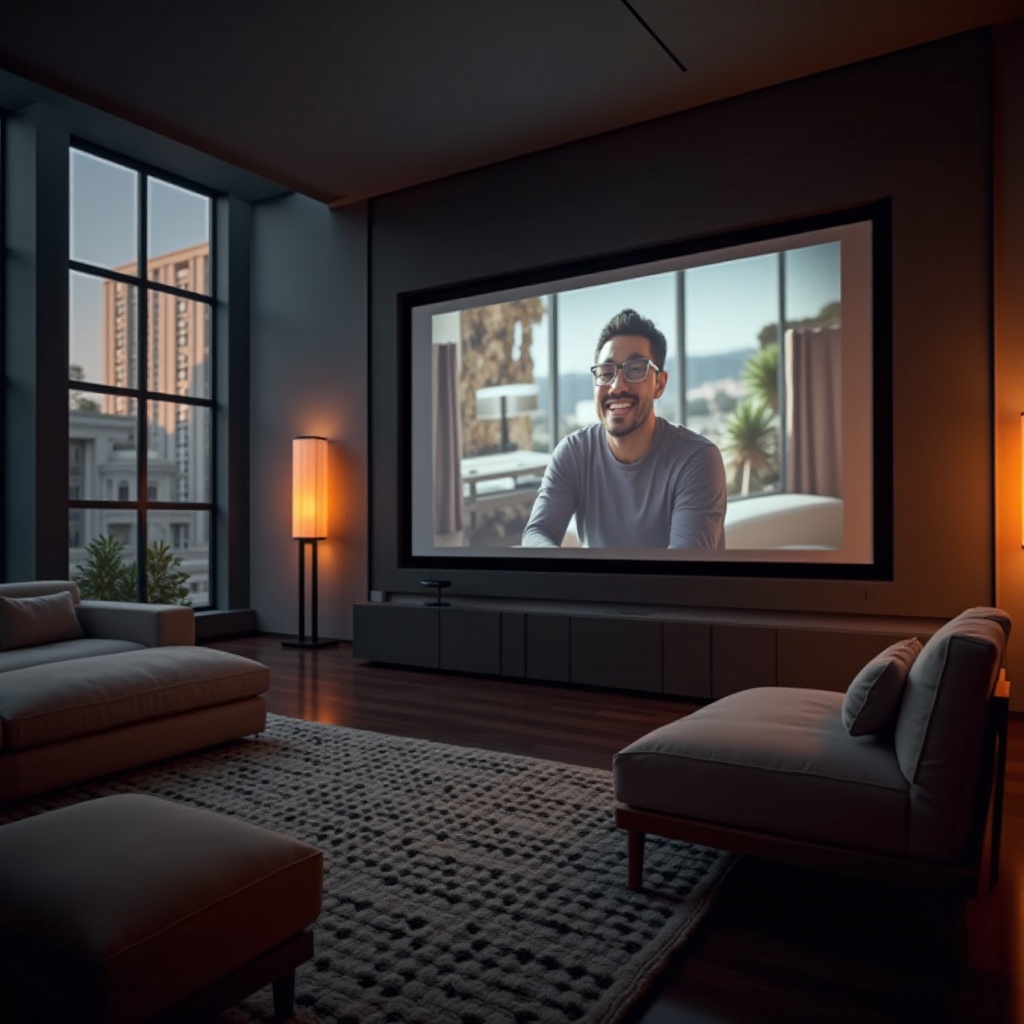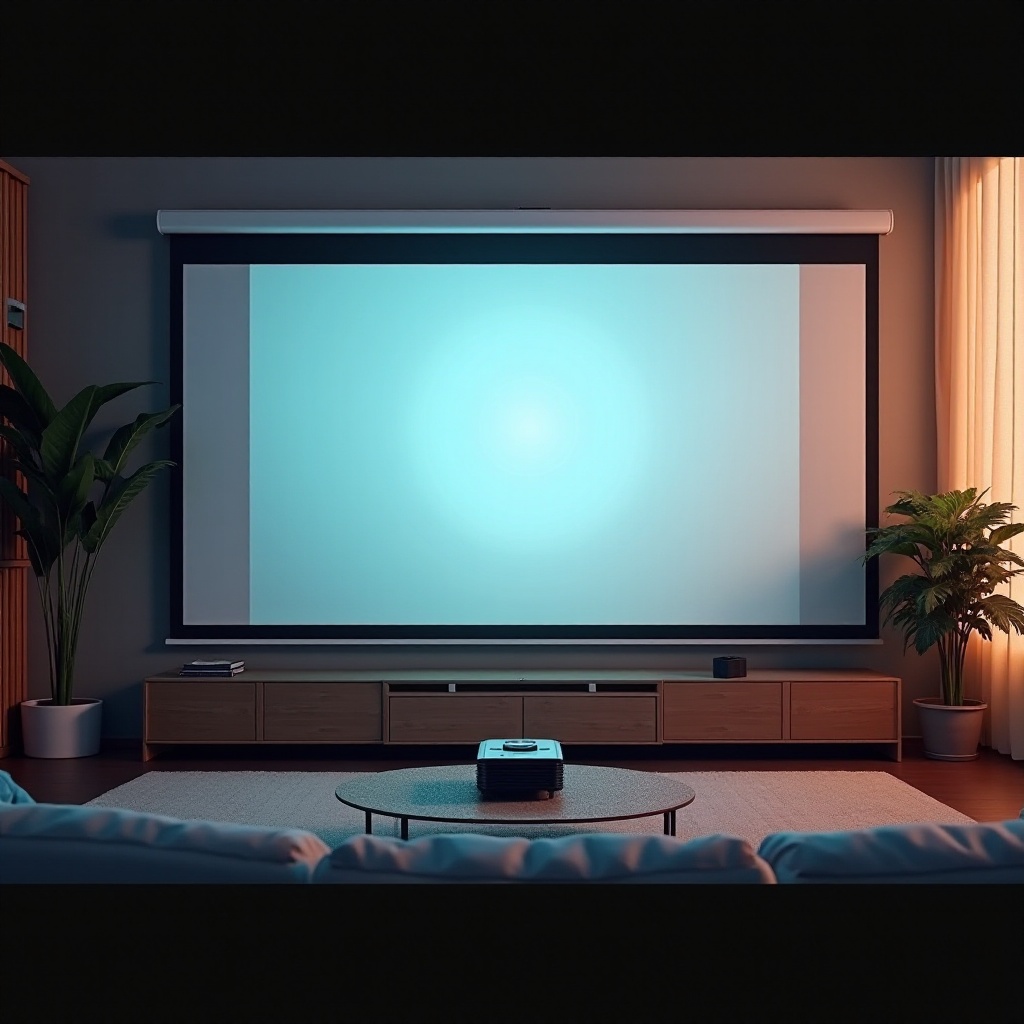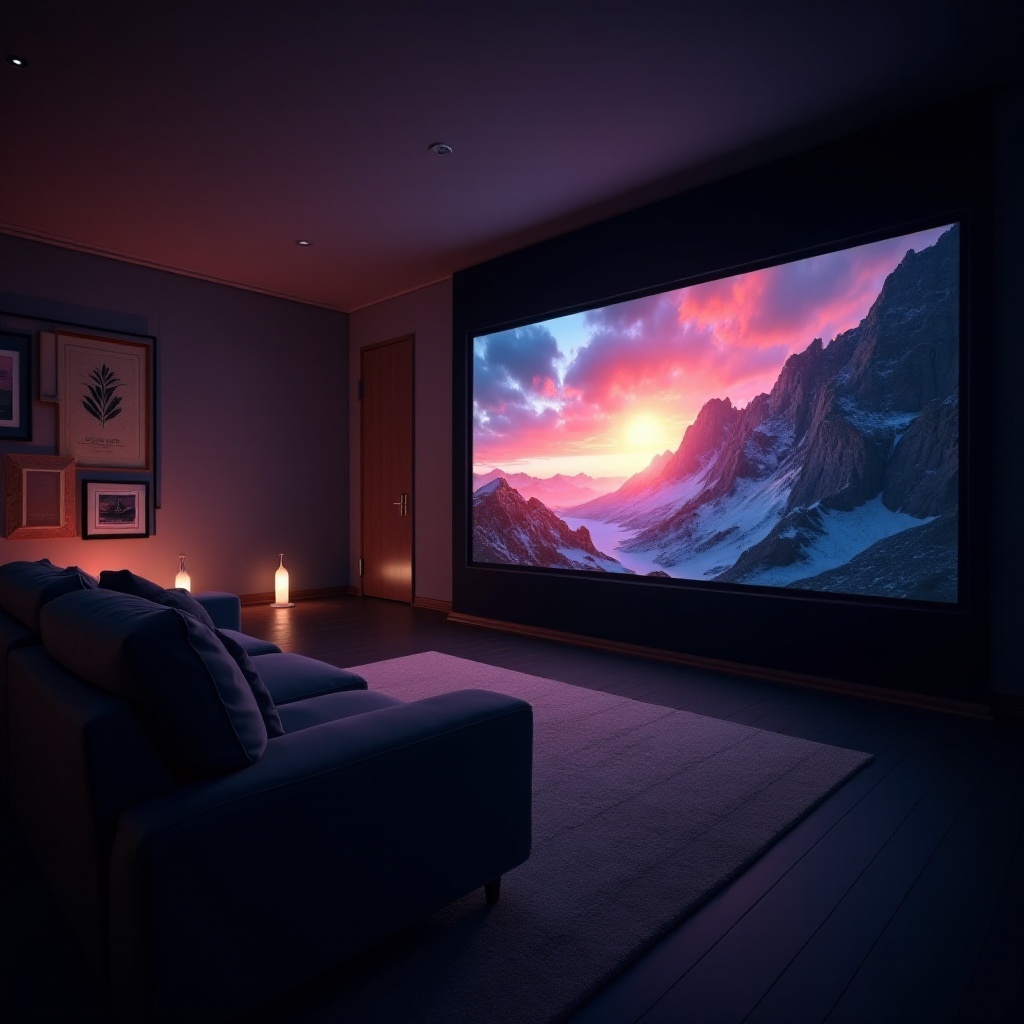Introduction
Navigating the world of home theater setups involves a multitude of components, but one essential piece often overlooked is the ALR (Ambient Light Rejection) screen. Designed to deliver top-notch picture quality even in rooms with plenty of ambient light, using an ALR screen for a long throw projector significantly enhances your viewing experience. If you’re curious about why you need one and how to get started, you’ve come to the right place.

What is an ALR Screen?
An ALR screen is a specially designed projection screen crafted to reject ambient light while maximizing the light coming from the projector. This innovative technology ensures that images remain bright and clear even in well-lit rooms, making it perfect for both home theaters and professional settings.
These screens work by utilizing a unique surface geometry that reflects light from the projector directly towards the audience, while diffusing or absorbing light from other sources. This characteristic makes ALR screens highly effective at producing vivid images without the washed-out effect caused by ambient light.
In essence, an ALR screen harnesses physics to enhance the picture quality, providing a superior viewing experience compared to traditional projection screens. They’re available in various sizes and types, designed to meet different needs and preferences, especially for use with long throw projectors.

Benefits of Using an ALR Screen with a Long Throw Projector
Pairing an ALR screen with a long throw projector offers several compelling benefits:
- Enhanced Image Brightness: ALR screens significantly boost the brightness of images, making them appear vibrant and lively even in brightly lit environments.
- Improved Contrast and Color Accuracy: With ambient light rejected, the screen displays deeper blacks and richer colors, enhancing contrast and ensuring color accuracy.
- Versatility in Lighting Conditions: ALR screens eliminate the need to darken your room fully, allowing for flexible setup in various lighting conditions, whether it’s daylight or artificial lighting.
- Reduced Eye Strain: The optimized brightness and clarity prevent eye strain, making long viewing sessions more comfortable.
- Versatile Applications: From home theaters to conference rooms, ALR screens offer exceptional performance in diverse settings, accommodating different usage scenarios.

How to Choose the Right ALR Screen for Your Long Throw Projector
Selecting the perfect ALR screen involves considering multiple factors to ensure it complements your long throw projector and your setup:
- Size and Aspect Ratio: Determine the size of the screen that fits your room while maintaining the recommended viewing distance. The aspect ratio should match the format of the content you’ll be viewing most, with 16:9 being common for home theaters and 4:3 for presentations.
- Gain Value: The gain value refers to the screen’s reflectivity. A higher gain can reflect more light, potentially improving brightness, but it may also result in narrower viewing angles and hotspotting. Choose a gain that provides a balance suited for your room’s ambient light conditions.
- Material Quality: Opt for high-quality materials that support the high-definition capabilities of your projector. Ensure the screen material is tensioned to avoid wrinkles or waves.
- Viewing Angle: Consider the screen’s effective viewing angle, which should accommodate your seating arrangement. Wider viewing angles ensure that everyone in the room sees a clear, vibrant image.
- Your Room’s Lighting Conditions: Assess the amount of ambient light in your room. If your room has numerous windows or ample lighting, a high-performance ALR screen is crucial to counteract these factors.
- Budget: The cost varies widely, so balance your budget with the features that best meet your needs without compromising on the critical attributes of a good ALR screen.
Installing an ALR Screen for Optimal Performance
Proper installation is key to maximizing the benefits of your ALR screen. Here’s how you can achieve this:
DIY Installation Tips
- Choose the Right Wall: Select a wall that’s free of direct light and offers adequate space for the screen size.
- Position Your Projector Correctly: Ensure that your projector is perfectly aligned with the screen to avoid distortion and focus issues.
- Mount the Screen Securely: Follow the manufacturer’s instructions for wall mounting, ensuring it’s tightly fastened and level.
- Check the Viewing Height: The screen’s bottom edge should be at a comfortable viewing height, usually around 30-36 inches above the floor.
Professional Installation: Pros and Cons
Pros
– Precision: Professional installers have the experience and tools for a perfectly aligned and secure installation.
– Efficiency: Saves you time and effort, ensuring everything is done quickly and correctly.
– Advice and Optimization: Professional installers can offer advice on optimizing your setup.
Cons
– Cost: Professional installation can be expensive, potentially increasing the overall cost of your home theater setup.
– Scheduling: You need to work around the installer’s schedule, which might not always align with yours.
Maintenance and Care for ALR Screens
Maintaining your ALR screen ensures longevity and consistent performance:
- Regular Dusting: Use a microfiber cloth to dust the screen lightly. Avoid using abrasive materials.
- Spot Cleaning: For smudges or fingerprints, use a mixture of mild soap and water with a soft cloth. Gently dab and do not scrub.
- Avoid Direct Sunlight: Prolonged exposure to direct sunlight can degrade the screen material. Use curtains or blinds to control light exposure.
- Annual Inspection: Periodically inspect for any signs of wear or damage and address them promptly.
Conclusion
Investing in an ALR screen for your long throw projector can transform your viewing experience, making it immersive and genuinely enjoyable. From understanding the advantages and choosing the right screen to proper installation and maintenance, these steps ensure that you get the most out of this advanced technology. Illuminate your movie nights and presentations with bright, clear images, regardless of ambient light conditions.
Frequently Asked Questions
What makes an ALR screen different from a regular projection screen?
An ALR screen differs from a regular projection screen through its unique ability to reject ambient light while reflecting the projector’s light. This results in significantly enhanced image brightness and contrast, even in well-lit rooms.
Can I use an ALR screen with any type of projector?
While ALR screens are highly effective with most projectors, they are particularly advantageous for long throw projectors due to the increased distance and potential ambient light interference. However, ensure the gain and other specifications match your projector for the best performance.
How do I clean and maintain my ALR screen?
To clean an ALR screen, use a dry microfiber cloth for regular dusting. For spot cleaning, gently dab with a mixture of mild soap and water. Avoid direct sunlight exposure to prevent material degradation, and inspect the screen annually for any signs of wear.